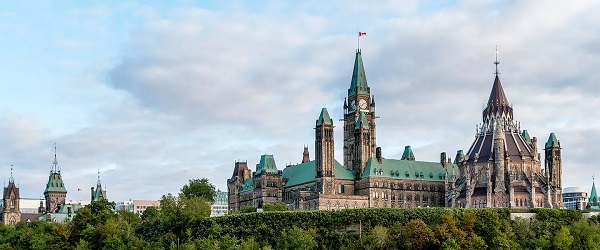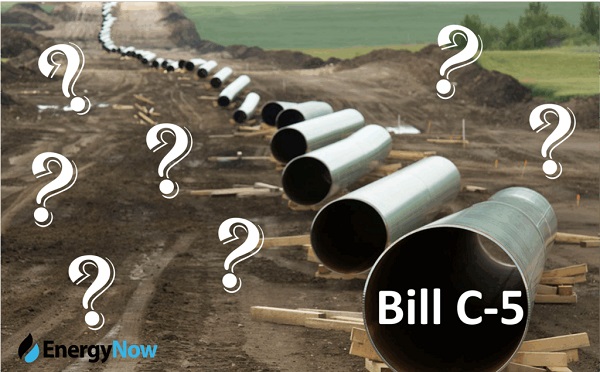National
Randy Boissonnault and the Liberal Scandal That Won’t Go Away

Standing Committee on Indigenous and Northern Affairs: How Fraud, False Identity Claims, and Liberal Entitlement Expose a System Rigged Against Canadians
Ladies and gentlemen, today, we take a closer look at what happens when the carefully constructed facade of Justin Trudeau’s Liberal Party crumbles. This isn’t just a scandal about one man’s lies—it’s about a government-wide culture of entitlement, deception, and corruption that prioritizes Liberal insiders over the hardworking Canadians they claim to represent.
Why are we here? Because a man named Randy Boissonnault—a former Liberal cabinet minister and trusted Trudeau ally—has been caught at the center of a scandal involving fraudulent business dealings, false claims of Indigenous identity, and federal contracts stolen from real Indigenous businesses. The setting? The Standing Committee on Indigenous and Northern Affairs, where Boissonnault faced over two hours of questioning from MPs determined to get to the truth.
But did we get the truth? Absolutely not. What we got was a masterclass in Liberal arrogance, evasion, and deflection.
At the heart of this controversy is Boissonnault’s involvement in a company called Global Health Imports (GHI), which falsely claimed to be Indigenous-owned in order to win lucrative federal contracts. For years, Boissonnault portrayed himself as a “non-status adopted Cree” based on vague family anecdotes. This label, of course, conveniently blurred the lines, allowing him to gain credibility in Indigenous spaces while avoiding legal scrutiny. Not only did GHI fraudulently secure taxpayer money meant for Indigenous businesses, but Boissonnault’s name and supposed Indigenous heritage were plastered all over Liberal Party campaign materials. For years, the Liberals actively promoted him as Indigenous, exploiting the very communities they claim to champion.
When the media and whistleblowers finally exposed the truth, Boissonnault resigned from his cabinet position. And now, he’s here, at INAN, supposedly to set the record straight. Spoiler alert: he didn’t.
Boissonnault’s opening statement was a lesson in political deflection. He apologized—not for the harm done to Indigenous communities or Canadian taxpayers, but for the “confusion” around his identity. He insisted he never claimed Indigenous status, despite evidence to the contrary, and described his use of the term “non-status adopted Cree” as an effort to honor his adoptive family’s supposed heritage—a claim Indigenous researchers have outright denied.
When pressed on his involvement with GHI, Boissonnault claimed ignorance. He told the committee he left the company in 2021 and had no idea his name was being used to secure fraudulent contracts. Really? We’re supposed to believe that a man who co-owned 50% of the company and whose name was actively used in business dealings was completely unaware of its activities? Either he’s lying, or he’s astonishingly incompetent.
It gets worse. When asked why he hasn’t sued his former business partner, Mr. Anderson, for allegedly using his name without consent, Boissonnault offered the weakest excuse imaginable: he’s “consulting legal counsel.” Months have passed since this scandal broke, and he still hasn’t taken a single step to clear his name. If someone stole your identity to commit fraud, wouldn’t you act immediately?
Thankfully, not everyone in the room was willing to let Boissonnault off the hook. Conservative MPs Michael Barrett and Martin Shields led the charge, relentlessly exposing Boissonnault’s contradictions and demanding accountability. Barrett zeroed in on Boissonnault’s failure to take legal action against GHI, calling it a clear sign of either complicity or cowardice. Shields turned his focus to the systemic failures that allowed this fraud to happen in the first place, pointing out the Liberal government’s negligence in safeguarding programs designed to support Indigenous communities.
Meanwhile, Bloc MP Nathalie Sinclair-Déguin and NDP MP Lori Idlout focused on the harm done to Indigenous communities. They highlighted how fraudulent activities like GHI’s undermine trust, reconciliation, and real opportunities for Indigenous businesses. They also demanded systemic reforms, like stricter oversight and verification processes, to prevent future abuses.
Of course, no Liberal scandal would be complete without the party’s MPs running interference. Enter Ben Carr and Anna Gainey. Carr used his time to praise Boissonnault’s “allyship” and steer the conversation away from fraud and deception. Gainey, who didn’t even bother to show up in person, framed the controversy as a “learning opportunity” for Boissonnault and the government. Neither of them asked a single hard question. They weren’t there to seek answers—they were there to protect their colleague and the Liberal Party brand.
Final Thoughts
Let’s be blunt. What we witnessed at the INAN hearing wasn’t just a scandal about Randy Boissonnault—it was a damning indictment of Justin Trudeau’s Liberal regime and its entire culture of corruption, entitlement, and betrayal of the Canadian people.
Think about what’s at stake here. We’re not talking about a minor oversight or a simple mistake. We’re talking about a Liberal insider who exploited a sacred cause—reconciliation with Indigenous peoples—for personal and political gain. A man who co-founded a company that defrauded taxpayers, deprived Indigenous businesses of opportunities, and damaged trust between the government and the communities it claims to support. And yet, instead of taking responsibility, he shows up to a committee hearing and feeds us a steady diet of deflection and excuses.
But let’s not just focus on Boissonnault. What about the rest of the Liberal Party? A party that promoted him as Indigenous in their campaigns, used his fabricated narrative to boost their image, and now refuses to hold him accountable. What we saw at the hearing was a carefully orchestrated performance. Liberal MPs didn’t ask hard questions because they didn’t want answers. Their job was to protect Boissonnault, protect the party, and protect their grip on power.
And here’s the tragic part: the real victims of this scandal aren’t sitting in Ottawa’s plush committee rooms. They’re the Indigenous entrepreneurs who lost out on contracts, the taxpayers who unknowingly funded this fraud, and the millions of Canadians who believed in a government that promised to do better.
This isn’t just a Randy Boissonnault problem. This is a Liberal problem. A systemic problem. A Trudeau problem. It’s about a government that’s so addicted to power, so comfortable with corruption, that they don’t even bother hiding it anymore.
But here’s the good news: Canadians are waking up. They’re seeing through the Liberal lies and realizing that the system isn’t broken—it’s rigged. Rigged for the insiders, the cronies, and the friends of Justin Trudeau.
So what happens next? That’s up to you, Canada. You have a choice. You can let this scandal fade into the background like so many others before it. Or you can demand better. Demand accountability. Demand a government that works for you, not for itself.
Please consider subscribing to The Opposition with Dan Knight .
Support our journalism and enjoy the full experience, upgrade your subscription.
Business
A new federal bureaucracy will not deliver the affordable housing Canadians need
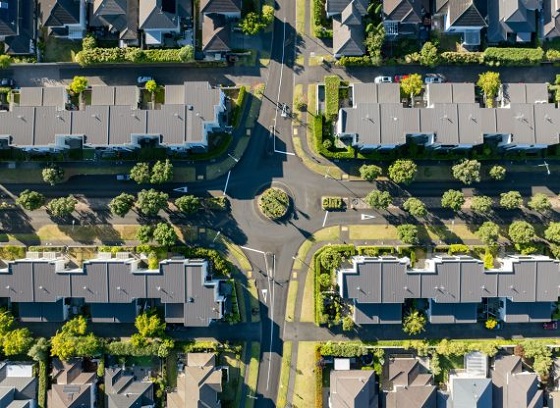
Governments are not real estate developers, and Canada should take note of the failure of New Zealand’s cancelled program, highlights a new MEI publication.
“The prospect of new homes is great, but execution is what matters,” says Renaud Brossard, vice president of Communications at the MEI and contributor to the report. “New Zealand’s government also thought more government intervention was the solution, but after seven years, its project had little to show for it.”
During the federal election, Prime Minister Mark Carney promised to establish a new Crown corporation, Build Canada Homes, to act as a developer of affordable housing. His plan includes $25 billion to finance prefabricated homes and an additional $10 billion in low-cost financing for developers building affordable homes.
This idea is not novel. In 2018, the New Zealand government launched the KiwiBuild program to address a lack of affordable housing. Starting with a budget of $1.7 billion, the project aimed to build 100,000 affordable homes by 2028.
In its first year, KiwiBuild successfully completed 49 units, a far cry from the 1,000-home target for that year. Experts estimated that at its initial rate, it would take the government 436 years to reach the 100,000-home target.
By the end of 2024, just 2,389 homes had been built. The program, which was abandoned in October 2024, has achieved barely 3 per cent of its goal, when including units still under construction.
One obstacle for KiwiBuild was how its target was set. The 100,000-home objective was developed with no rigorous process and no consideration for the availability of construction labour, leading to an overestimation of the program’s capabilities.
“What New Zealand’s government-backed home-building program shows is that building homes simply isn’t the government’s expertise,” said Mr. Brossard. “Once again, the source of the problem isn’t too little government intervention; it’s too much.”
According to the Canadian Mortgage and Housing Corporation, Canada needs an additional 4.8 million homes to restore affordability levels. This would entail building between 430,000 to 480,000 new units annually. Figures on Canada’s housing starts show that we are currently not on track to meet this goal.
The MEI points to high development charges and long permitting delays as key impediments to accelerating the pace of construction.
Between 2020 and 2022 alone, development charges rose by 33 per cent across Canada. In Toronto, these charges now account for more than 25 per cent of the total cost of a home.
Canada also ranks well behind most OECD countries on the time it takes to obtain a construction permit.
“KiwiBuild shows us the limitations of a government-led approach,” said Mr. Brossard. “Instead of creating a whole new bureaucracy, the government should focus on creating a regulatory environment that allows developers to build the housing Canadians need.”
The MEI viewpoint is available here.
* * *
The MEI is an independent public policy think tank with offices in Montreal, Ottawa, and Calgary. Through its publications, media appearances, and advisory services to policymakers, the MEI stimulates public policy debate and reforms based on sound economics and entrepreneurship.
Business
Ottawa Funded the China Ferry Deal—Then Pretended to Oppose It
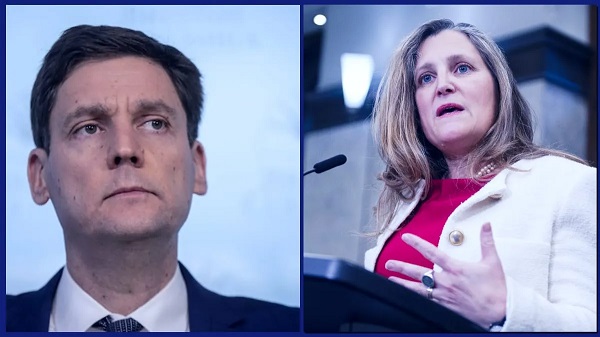
While Beijing-backed hackers infiltrated Canadian telecoms, federal and B.C. leaders quietly financed a billion-dollar shipbuilding deal with a Chinese state firm—then tried to pass the buck.
So just to recap—because this one’s almost too absurd to believe: BC Ferries cuts a billion-dollar deal with a Chinese state-owned shipyard to build four new ferries. Canada’s Deputy Prime Minister Chrystia Freeland—always quick to perform outrage when the cameras are on—writes a stern letter saying how “dismayed” she is. She scolds British Columbia for daring to do business with a hostile foreign regime that’s literally attacking our critical infrastructure in real time.
And then—wait for it—it turns out her own federal government quietly financed the whole thing.
Yes, really.
According to an explosive report from The Globe and Mail, the Canada Infrastructure Bank—a federal Crown corporation—provided $1 billion in low-interest financing for the very same China shipbuilding deal Freeland claimed to oppose. The contract was signed in March 2025. The outrage? That only came later, when the public found out about it in June.

Freeland’s letter to BC’s Transportation Minister was loaded with warnings. She talked about China’s “unjustified tariffs” and “cybersecurity threats.” She demanded assurances that “no federal funding” would support the purchase. But what she didn’t mention—what she conveniently left out—was that Ottawa had already cut the cheque. The financing was already in place. The loan had been approved. Freeland just didn’t say a word.
And when reporters asked for clarification, what did her office say? Nothing. They passed the buck to another minister. The new Infrastructure Minister, Gregor Robertson, now claims the government had “no influence” in the procurement decision. No influence? You loan a billion dollars to a company and have no opinion on where it goes?
Let’s be clear: This wasn’t some harmless miscommunication. If it wasn’t a cover-up, then it was sheer incompetence—the same brand of incompetence that’s driven our shipyards into obsolescence, our economy into dependence, and our country into managed decline. An entire federal cabinet stood by, watched this unfold, signed the cheque—and then pretended they had nothing to do with it.
And British Columbia’s government? Just as bad. Premier David Eby, the man who pretends to champion “BC First,” claims he was “not happy” with the China deal but says it’s “too late” to change course. Too late? This isn’t an asteroid heading for Earth. It’s a contract. And contracts can be rewritten, canceled, renegotiated—if anyone in charge had the political will to stand up and say, “No, we don’t hand billion-dollar infrastructure projects to hostile regimes.”
But instead, we get excuse after excuse. They say BC Ferries is independent. They say there was no capacity in Canada. They say we had no choice. All the while, Canadian shipyards sit idle, unionized workers are frozen out, and the Canadian taxpayer is stuck subsidizing Chinese shipbuilding—and Chinese espionage.
Because while all of this was happening, we now know that a Chinese state-sponsored hacking group called Salt Typhoon was actively breaching Canadian telecommunications networks. That’s not speculation—it’s confirmed in a federal cyber security bulletin dated June 19, 2025.
Chinese actors exploited a vulnerability in Cisco equipment and infiltrated the networks of at least one major Canadian telecom provider. They pulled config files, rerouted traffic through GRE tunnels, and monitored call metadata and SMS communications. Translation: They were spying. On us. On officials. On infrastructure.
So let’s break this down. In February, China hacked Canadian telecoms. In March, Canada quietly finances a massive shipbuilding contract with China. In June, Freeland pretends to be outraged—while hiding the fact that her own government bankrolled it.
And now we’re told, “There’s nothing to see here. No jurisdiction.”
Really?
Freeland has jurisdiction when it comes to issuing carbon taxes, banning handguns, and lecturing citizens about disinformation—but somehow has no jurisdiction when her own Infrastructure Bank gives a billion dollars to build ships in a country that’s attacking our networks and undermining our democracy?
And it gets worse. The interest rate on the loan? Just 1.8%. That’s below market. That’s a subsidy, plain and simple. The financial gap will be recorded as government funding. So even if the Liberals want to play word games about “no direct funding,” that distinction is meaningless. The money came from taxpayers. It went to BC Ferries. It ended up in the hands of the Chinese Communist Party.
So what do we call this? It’s not economic strategy. It’s not climate policy. It’s not forward-looking infrastructure planning.
It’s decline. Managed decline.
It’s a government that tells Canadians we’re too broke, too slow, too divided to build our own ships. So we’ll just outsource it. To the same regime our intelligence services say is spying on us and interfering in our elections.
This was a test. A big one. And the people who told you they were going to put “Canada First”—people like David Eby and Mark Carney—failed that test spectacularly. When it came time to make a real choice—stand with Canadian workers, Canadian industry, and Canadian sovereignty—or cave to foreign pressure and cheap outsourcing, they chose China.
And then they lied about it.
But Canadians aren’t stupid. We know what leadership looks like—and this isn’t it. We don’t need more slogans. We need action. We need courage. We need people in government who actually believe in this country and the people who built it.
Because Canada can build ships. Canada can defend its infrastructure. And Canada should never hand over critical national projects to a regime that’s actively working against our interests.
If this is what “Canada First” looks like under the Liberals and the BC NDP, then we need something better. It’s time to stop managing decline and start building again.
Call the election. Let Canadians choose a path forward—one rooted in strength, in sovereignty, and in pride. Let us choose leaders who put Canada first—for real.
Subscribe to The Opposition with Dan Knight
-
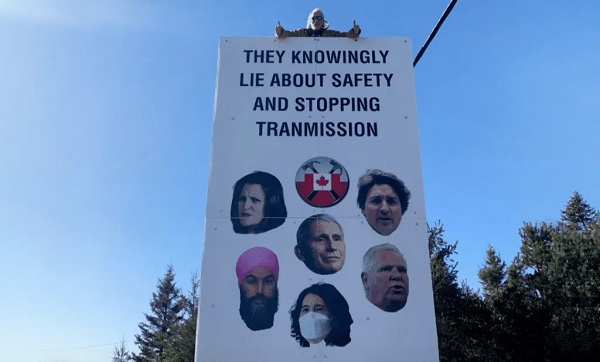
 COVID-192 days ago
COVID-192 days agoOntario man launches new challenge against province’s latest attempt to ban free expression on roadside billboards
-
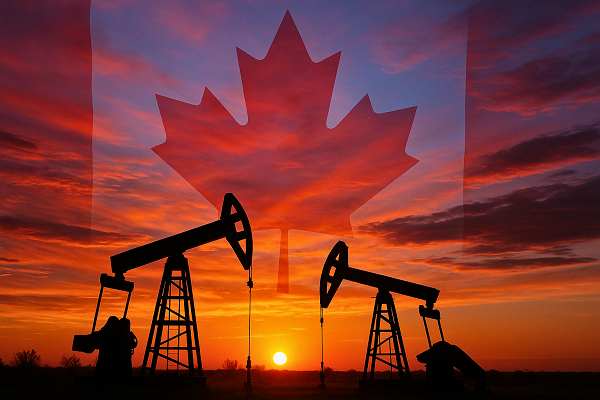
 Energy2 days ago
Energy2 days agoThis Canada Day, Celebrate Energy Renewal
-

 COVID-1915 hours ago
COVID-1915 hours agoNew Peer-Reviewed Study Affirms COVID Vaccines Reduce Fertility
-

 Business11 hours ago
Business11 hours agoOttawa Funded the China Ferry Deal—Then Pretended to Oppose It
-
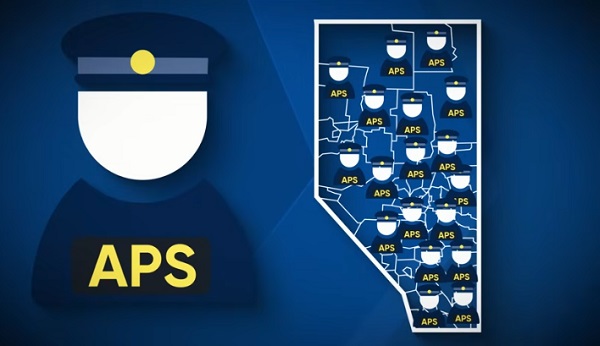
 Alberta1 day ago
Alberta1 day agoAlberta Next Takes A Look At Alberta Provincial Police Force
-
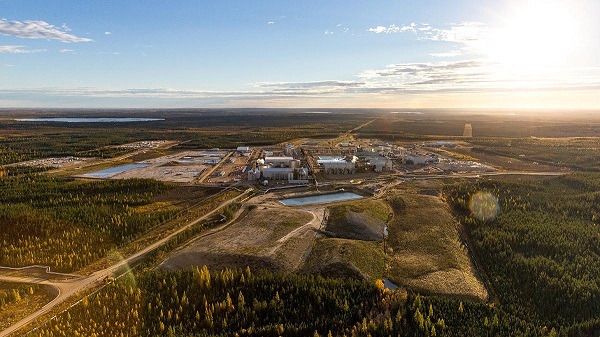
 Alberta2 days ago
Alberta2 days agoCanadian Oil Sands Production Expected to Reach All-time Highs this Year Despite Lower Oil Prices
-

 MAiD13 hours ago
MAiD13 hours agoCanada’s euthanasia regime is not health care, but a death machine for the unwanted
-
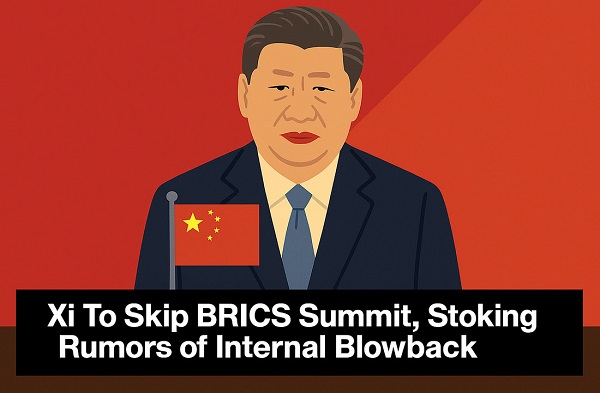
 International2 days ago
International2 days agoPresident Xi Skips Key Summit, Adding Fuel to Ebbing Power Theories







